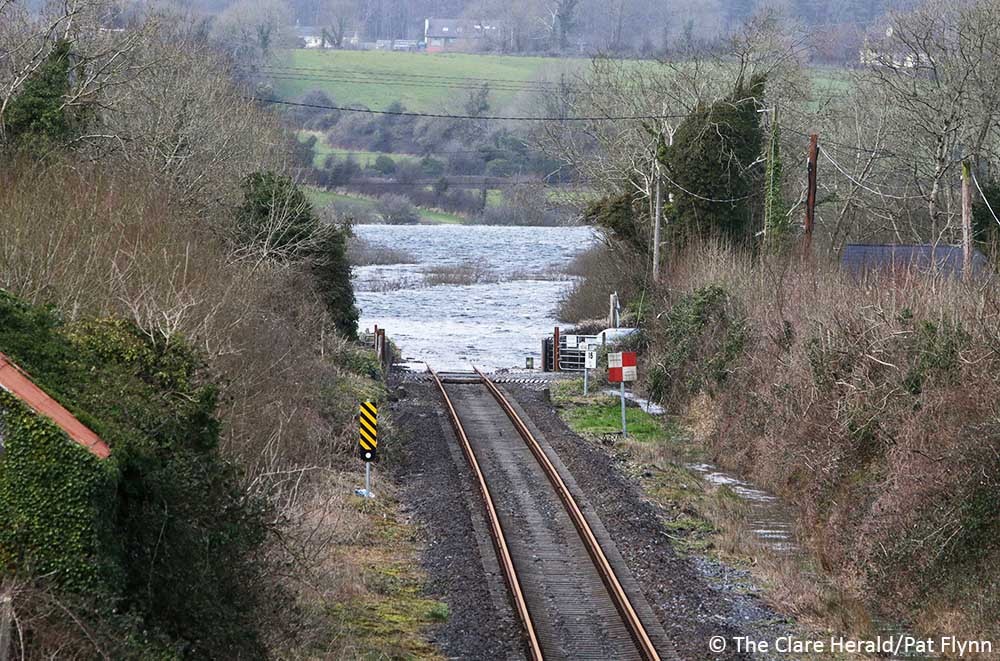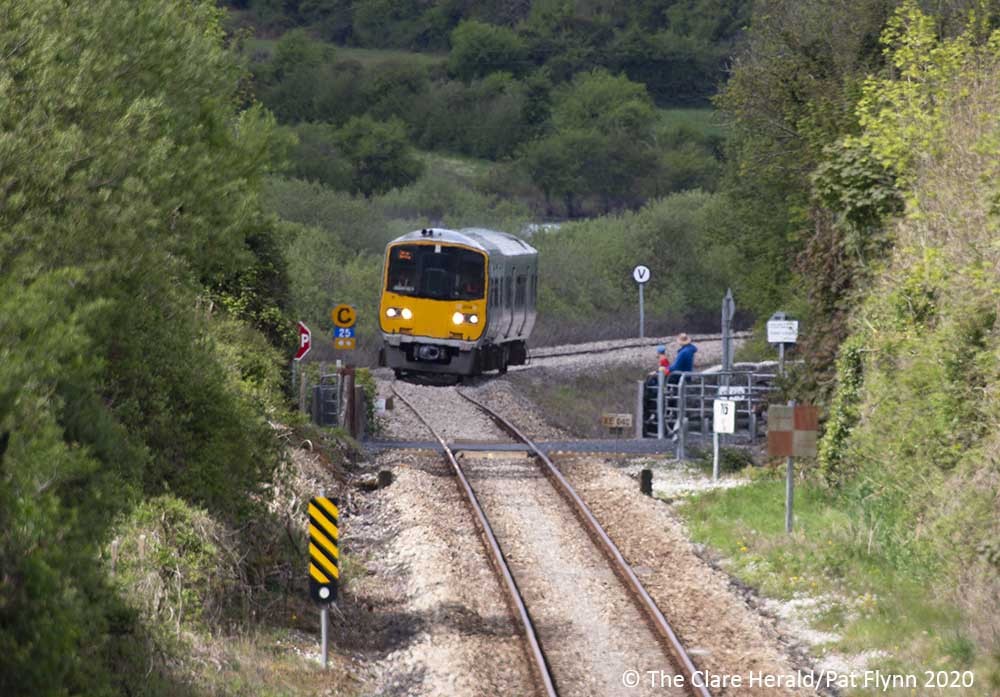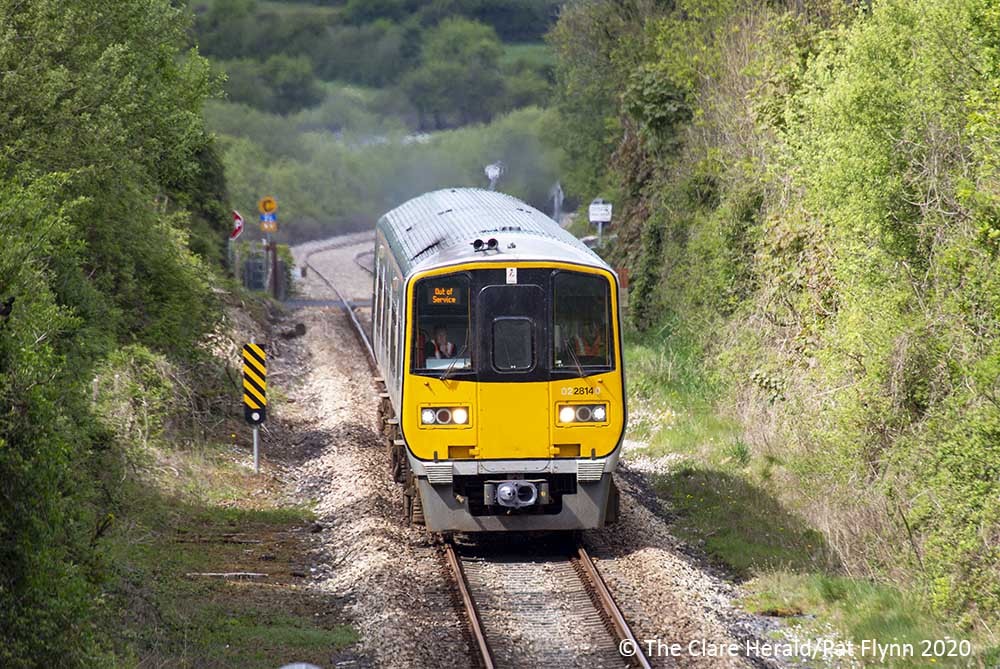
Iarnród Éireann has said the rail line between Limerick and Ennis is expected to reopen for service tomorrow (Tuesday).
The line has been closed since late February due to flooding at Ballycar. A test train operated on the line this afternoon however no issues are expected.
According to Iarnród Éireann: “Customers should note that due to Covid-19 a revised timetable is in place and only essential travel is permitted at this time, but for those who must travel please check www.irishrail.ie before travelling for times.”

The railway track at Ballycar Lough has flooded on a number of occasions in recent years. This flooding has led to temporary closures of the Limerick to Ennis railway line for extended periods of up to 20 weeks at a time.
The line at Ballycar was closed for 140 days in 2015 and 110 days in 2014.
In February 2017, then Minister of State with responsibility for the OPW and Flood Relief Minister Seán Canney visited Ballycar. He was accompanied by Clare’s four oireachtas members and spoke with locals about the long running flooding issues.
The minister said at the time that he was committed to the future of the Western Rail Corridor and wanted to see the matter resolved and that he would make every effort to secure the future of the line. However, nothing has been done in the meantime to resolve the long standing problem.

Iarnród Éireann has previously raised the track level by 60 centimetres at Ballycar in 2003 to mitigate against the effects of flooding. This time flood waters reached 1 metre above the track. Work is ongoing on a feasibility study to explore engineering solutions to further mitigate against flooding. This study has been commissioned by Iarnród Éireann, but includes consultation with the OPW, Clare County Council, and The Shannon Group. Any mitigation actions, would be subject to funding allocation.
Ballycar Lough and its environs lie within a geological and hydrogeological environment where the underlying limestone rock and thin covering of soil and bedrock exposure combine to produce a shallow network of springs, turloughs and disappearing streams. The causes of flooding at Ballycar Lough are mainly the prolonged sustained rainfall in Ballycar Lough catchment and the slow outflow stream of Ballycar Lough located between the swallow hole and the spring.
